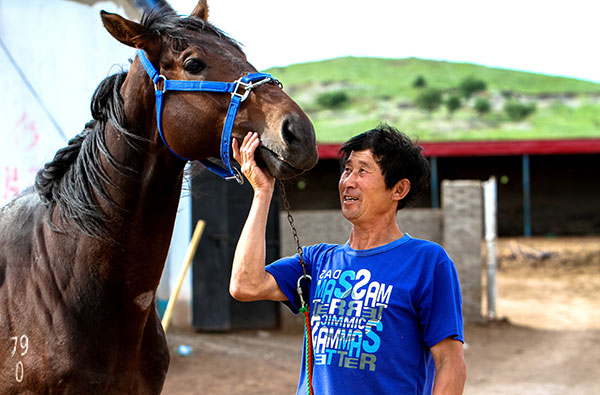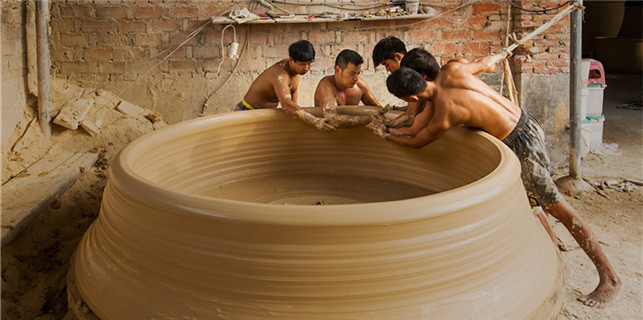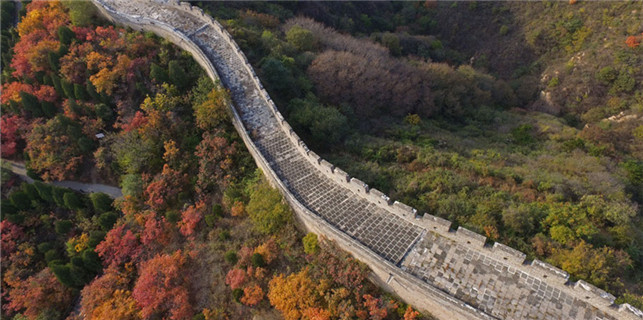Tailor-made solutions have poverty alleviation sewn up
 |
|
Residents with an interest in horses have been encouraged to start equine-related businesses in Horqin Right Wing Middle Banner to boost their income. [Photo provided to China Daily] |
Tailored measures
In December, she began taking embroidery classes arranged by the local government as a part of a targeted poverty relief strategy. At the classes, she was taught how to decorate clothes, slippers and pillowcases with traditional embroidery. When complete, the items are sold online.
The classes are part of the government's plan to make decisive progress in poverty alleviation. Every person living in poverty is now offered a tailor-made poverty relief plan designed to suit their family circumstances, personal skills and even their interests.
Because Mongolians are passionate about horses and many learn to ride as children, the banner's authorities decided to create jobs by developing the equine industry. In addition to breeding horses, young Mongolians are encouraged to become skilled riders and take part in races nationwide.
Xi first raised the idea of the targeted poverty relief in November 2013 when he visited a village in Huayuan, a county in the central province of Hunan.
In June 2015, he explained the philosophy behind the strategy and its basic requirements while presiding at a CPC symposium on poverty relief and economic and social development in Guizhou province.
Starting in 2014, before the tailor-made plans were drafted, the authorities conducted detailed surveys and registration work. The surveys identified 29.48 million poverty-stricken families, 89.62 million poor people and 128,000 impoverished villages, while pinpointing their distribution, examining the sources of their poverty and determining the measures required to raise living standards.
The measures used in Horqin are perfect for Mu. "Embroidery is part of our ethnic group's heritage, I really enjoy doing it. I used to watch my mother doing it when I was age 4. I've made more than 5,000 yuan in the last six months," she said.
The 2,600 women, including Mu, who were registered as poor and encouraged to join embroidery workshops earned an average of 2,000 yuan each between April and August, providing extra income for their families. The highest earner made 8,000 yuan.
Now, 50 university graduates from the banner have established an association to help the women sell their embroidered products via the internet and mobile applications.
"We can sell 150 to 200 pairs of slippers a day online. We expect online sales to rise in the future and the annual incomes of these hardworking women could reach between 5,000 and 8,000 yuan next year," said Fu Lin, head of the association. "Every yuan counts in poverty alleviation."
E-commerce network
The country's fast-growing e-commerce network is playing an important role in the latest round of poverty alleviation measures. Last year, online sales of products from poverty-stricken counties reached 29 trillion yuan, four times higher than five years ago.
The determination and scale of the poverty alleviation projects launched after the 18th CPC National Congress at the end of 2012 is unprecedented, according to Liu Yongfu, director of the State Council Leading Group Office for Poverty Alleviation and Development.
From 2013 to 2016, the number of people living in poverty fell from 99 million to 43.36 million, and more than 10 million people will be lifted out of poverty this year, Liu said.
An average 13 million people have been lifted above the poverty line in each of the past five years.
From 1986 to 2000, the figure was about 6.4 million, while it was 6.7 million from 2001 to 2010. In addition, the poverty head count ratio has fallen from 10.2 percent to less than 4 percent since 2012.
During the same period, 28 counties have dropped the unglamorous "poverty-stricken" title, and more are expected to follow suit this year. For the first time in history, the number of poverty-stricken counties is falling, according to Liu.
"The number of people being lifted out of poverty annually actually began to fall before the latest poverty alleviation approaches were put in place," he said.
When he outlined the relief measures in 2014, Xi cited the key approaches as industrial development, relocation, environmental protection, education, social welfare and financial and medical support from the government.
He also encouraged financial input from industries and social forces, saying the social welfare system should provide basic living standards for the impoverished and unemployed.
In a letter of congratulation to the 2017 Global Poverty Reduction and Development Forum on Beijing, UN Secretary-General Antonio Guterres spoke highly of China's poverty alleviation achievements, saying that targeted alleviation measures are the only way to help the poorest in society and to achieve the major goals of the organization's 2030 Agenda for Sustainable Development.
China has lifted hundreds of millions of people out of poverty, and its experience can offer valuable lessons to other developing countries, he added.






















